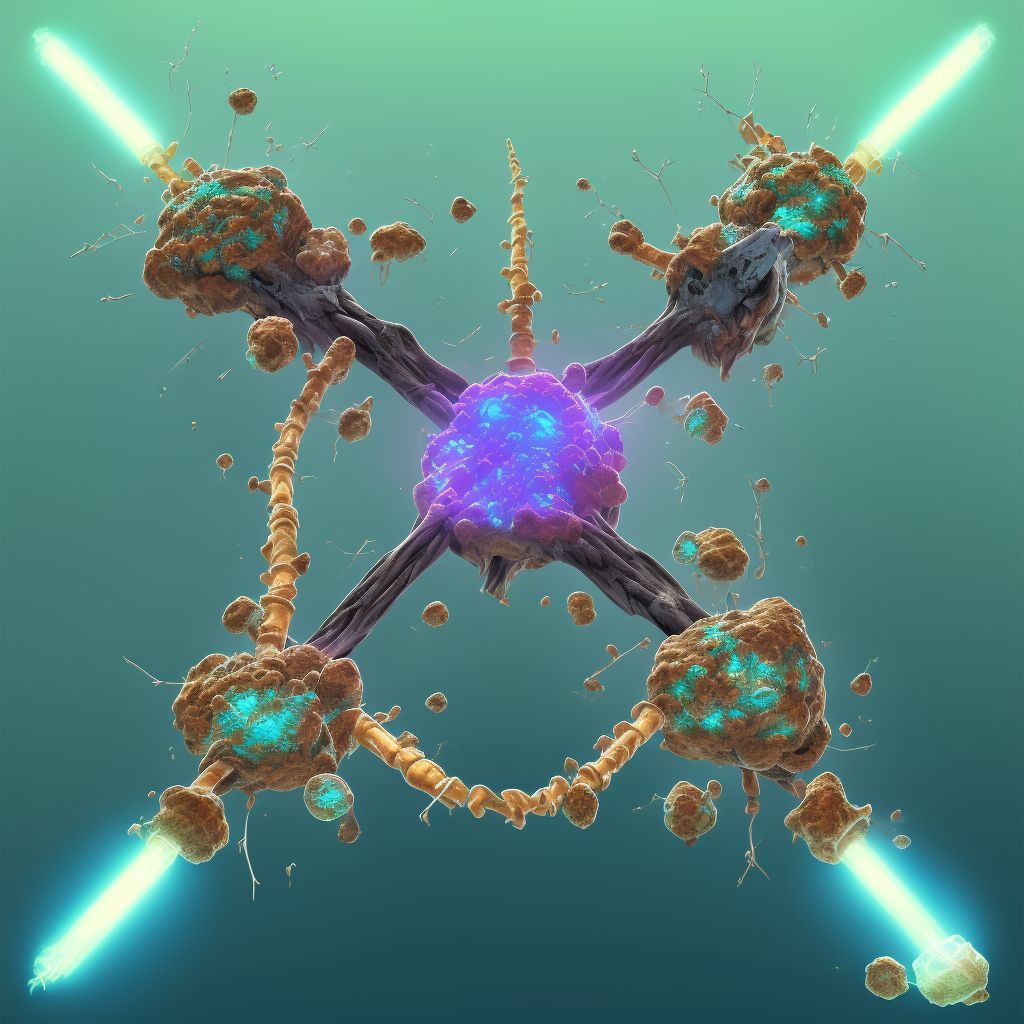
Nondisplaced fracture of medial condyle of unspecified tibia, sequela Save
ICD-10 code: S82.136S
Disease category: S82.136: Nondisplaced fracture of medial condyle of unspecified tibia
Nondisplaced Fracture of Medial Condyle of Unspecified Tibia, Sequela: Understanding the Condition
A nondisplaced fracture of the medial condyle of the unspecified tibia, sequela, is a specific type of bone injury that can have long-term consequences. This condition occurs when the medial condyle, which is the rounded prominence on the inner side of the tibia bone, suffers a fracture that does not cause any significant displacement. While treatment options are not discussed in this article, it is important to have a basic understanding of this condition.
When someone experiences a nondisplaced fracture of the medial condyle of the unspecified tibia, sequela, it means that the fracture occurred in the past, and the person is now dealing with the aftereffects. This condition can result in persistent pain, limited mobility, and potential complications, depending on the severity of the initial fracture.
It is crucial to note that the unspecified tibia refers to the lower leg bone, which connects the knee joint to the ankle joint. The medial condyle, located on the inner aspect of the tibia, plays a vital role in knee stability.
Common causes of this injury include trauma, such as a fall or direct blow to the affected area, sports-related incidents, or accidents. The severity of the initial fracture can vary, ranging from a small crack to a more significant break. However, as this article focuses on understanding the condition and not treatment, it is important to consult a healthcare professional for personalized advice.
- Symptoms:
- Diagnosis:
- Complications:
- Management:
The symptoms of a nondisplaced fracture of the medial condyle of the unspecified tibia, sequela, may include persistent knee pain, swelling, tenderness, and difficulty walking or bearing weight on the affected leg.
Diagnosing this condition typically involves a thorough physical examination, medical history review, and imaging tests, such as X-rays, MRIs, or CT scans. These diagnostic procedures help determine the extent of the fracture and any potential complications.
In some cases, this type of fracture can lead to complications, including chronic pain, knee instability, limited range of motion, and increased risk of future fractures. Early intervention and proper management can help mitigate these risks.
While treatment options are not discussed in this article, managing a nondisplaced fracture of the medial condyle of the unspecified tibia, sequela, usually involves a combination of rest, immobilization, physical therapy, pain management, and rehabilitation exercises.
In conclusion, a nondisplaced fracture of the medial condyle of the unspecified tibia, sequela, can
Treatment of Nondisplaced fracture of medial condyle of unspecified tibia, sequela:
Treatment Options for Nondisplaced Fracture of Medial Condyle of Unspecified Tibia, Sequela
When it comes to the treatment of a nondisplaced fracture of the medial condyle of the unspecified tibia, there are several options available. The appropriate treatment method depends on various factors such as the severity of the fracture, the patient's age, overall health, and personal pre...
To see full information about treatment please Sign up or Log in